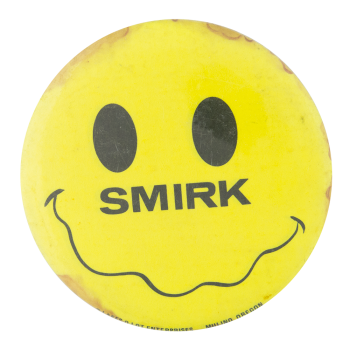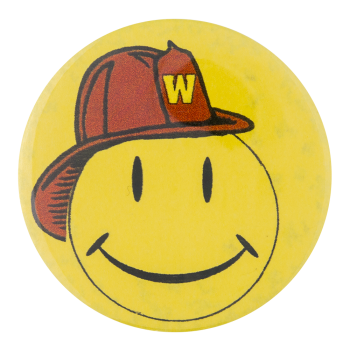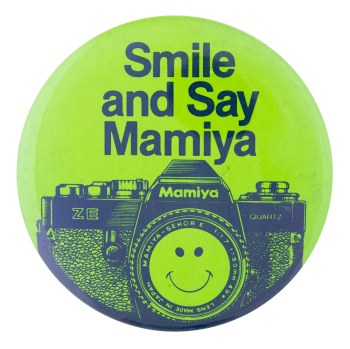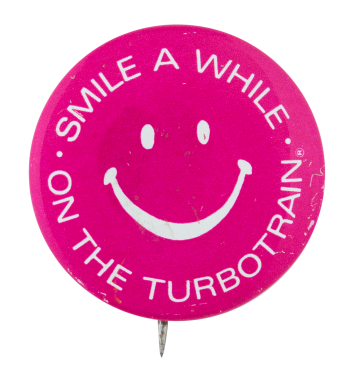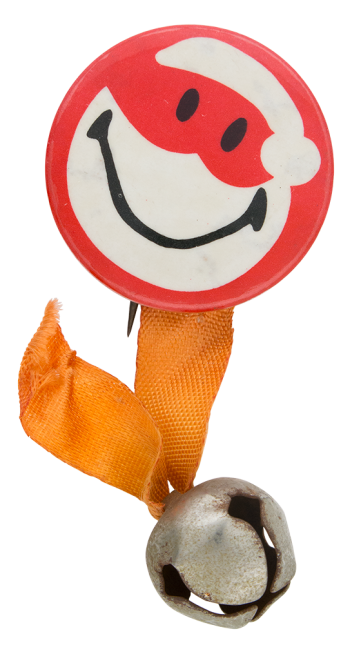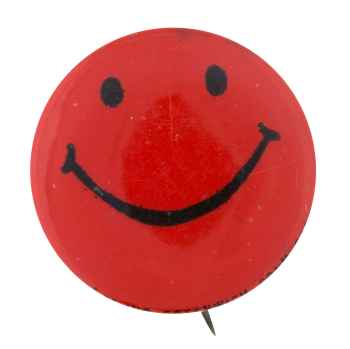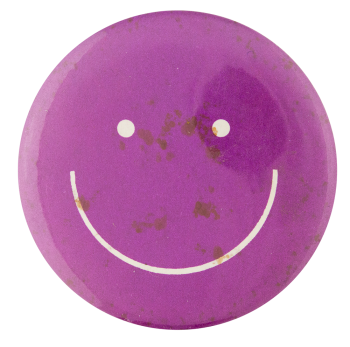Smirk
| Category | |
|---|---|
| Additional Images | |
| Text on Button | SMIRK |
| Image Description | A yellow background with black text across the middle of the smiley face. Black eyes and a squiggly mouth. |
| Curl Text | © LAFFS-O-LOT ENTERPRISES MULINO,OREGON |
| Back Style | |
| The Shape | |
| The Size | |
| Additional Information | The classic yellow smiley face is comprised of a yellow circle, two black dots for eyes, and a black arc ending in serifs for a mouth. It was designed in 1963 by commercial artist, Harvey Ross Ball. Ball was commissioned by The State Mutual Life Insurance Company to create a happy face to raise the morale of their employees. His version was created in 10 minutes. The design was printed onto more than 50 million buttons. Neither Ball nor the company copyrighted this smiley, so it was continually used by other businesses in their promotions. A smirk is considered a smug of condescending expression. Today, a squiggly smiley face is called the woozy face (U+1F974) which indicates that the person expressing this emoji feels tired and emotional. |
| Sources |
About Harvey Ball. (n.d.). Retrieved September 12, 2020, from https://www.worldsmileday.com/index.php/article-index/item/380-about-ha… Smirk. (n.d.). Retrieved September 14, 2020, from https://www.merriam-webster.com/dictionary/smirk Woozy Face Emoji. (n.d.). Retrieved September 14, 2020, from https://emojipedia.org/woozy-face/ |
| Catalog ID | SM0056 |

